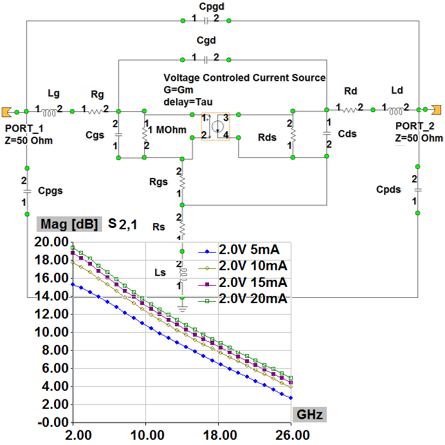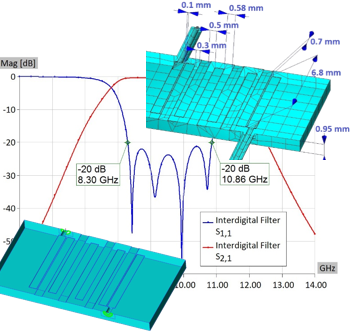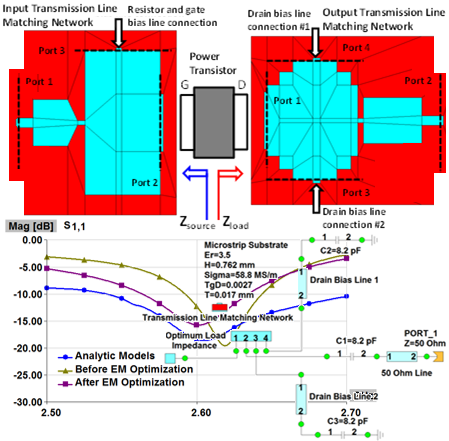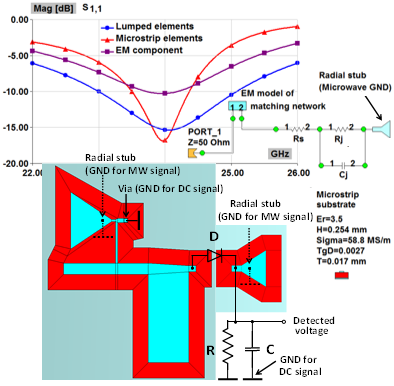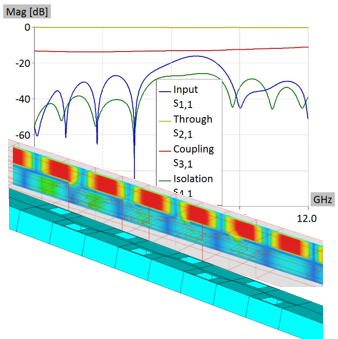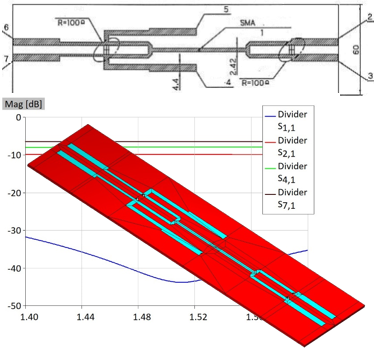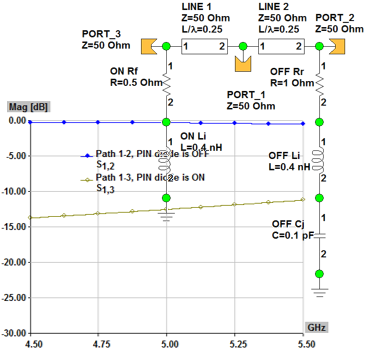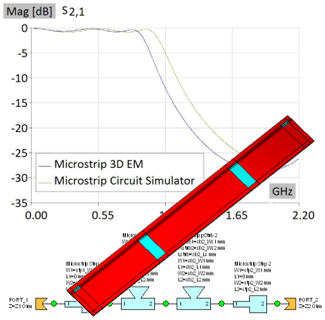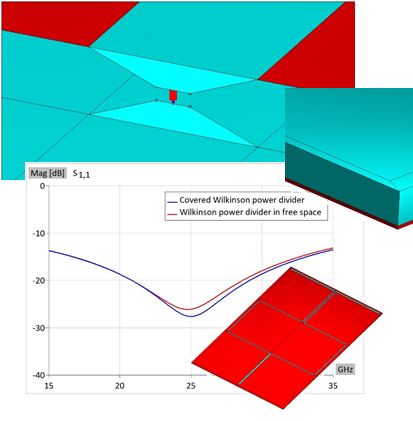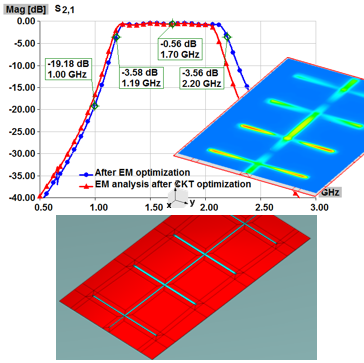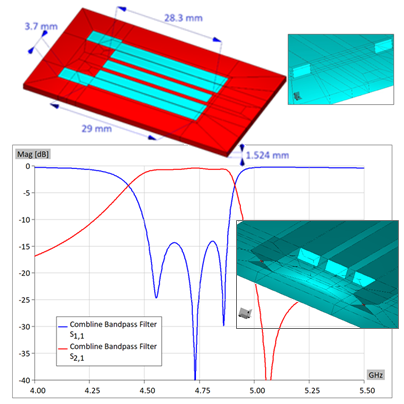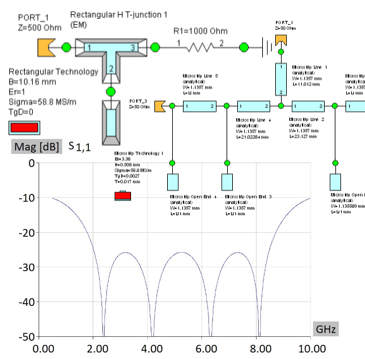Linear Transistor Modeling Using Equivalent Circuits
The accurate transistor characterization is a starting point to carry out an amplifier design. Lumped circuit equivalent transistor models are compact and versatile means of providing reliable S parameter data. WIPL-D Microwave provides a complete environment to implement these models.
The modeling of a commercially available low power packaged GaAs HEMT has been illustrated. The partitioning of the transistor equivalent circuit to intrinsic and extrinsic elements has been presented and physical grounds behind each of the elements explained in brief. It has been shown that S parameters calculated using the model are highly accurate and can be utilized to overcome the limitation imposed with sparsely tabulated transistor data, e.g. to find the optimal biasing point for a desired application.
WIPL-D Microwave design environment provides required flexibility to implement a schematic of any commonly used linear transistor model.


